
Sign in
Don't have an account with us? Sign up using the form below and get some free bonuses!

Talking back, or "back talk," is when a child pushes back on what an adult (often their parent) is saying, demonstrating what adults perceive as a lack of respect. It may include verbal components, up to and including the child having a shouting match with their parents, as well as nonverbal components, such as eye rolling.
Back talk can be MADDENING for even the most peaceful parents. No one likes yelling or being yelled at; yelling or any kind of negative attitude naturally puts our nervous system in "danger" mode.
Still, talking back is a normal part of growing up. Kids have strong emotions just like adults do, and it's natural for them to express their anger, frustration, and general angst.
Kids are learning how to assert their boundaries, wishes, and needs in emotionally authentic ways that also work for others. Life can be a bit bumpy while they're figuring this out -- especially since the part of the brain that renders them capable of taking others' perspectives, the right parietal lobe, doesn't fully develop until the late teens or early 20s (source).
What's the positive parenting perspective, then, when a child talks back? Do we just let it go when children aren't speaking in a respectful manner? Are there "consequences" when kids do this?
Take a deep breath, dear parents -- you don't need to let it go entirely. You can still set clear limits in ways that are both peaceful and respectful. Here's how to handle it when kids talk back, all within the framework of positive parenting.
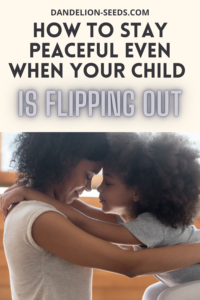
For starters, parents can do a few things to encourage their child to not talk back. The most effective way to teach respect is always through genuine connection with our kids.
We literally cannot teach a child who's in the midst of talking back. They talk back when they're struggling, and for a child who's struggling and angry, the learning part of their brain is effectively "turned off." Children must be emotionally regulated to learn. This is true at home as well as at school (source).
With that in mind, be proactive about spending quality time and creating joy together. It's the basis for all emotional connection. Secure attachment largely stems from a sense of mutual delight (source).
Model during times of calm and peace that you're there to listen and respect your child. The best way to encourage respect is to model the gentle behavior we want to see. After all, kids learn by what we do, not by what we teach through words alone.
The more you practice listening and connecting during times of low stress, the more easily you'll default to connection when conflict arises. In fact, connection begets connection -- and respect begets respect. The more often we feel emotionally connected to others, the more unnatural it feels when we don't. We want disconnection to feel unnatural, because it's not our natural state!
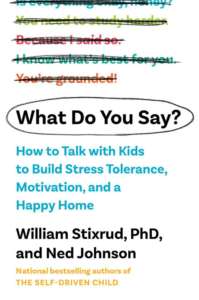
Here are three tools to help make parenting a bit easier through the gift of connection, even when your child is talking back.
We've heard from experts like Dr. Ross Greene that all behavior is communication. The same goes for talking back. Think of talking back as communicating something deeper that the child doesn't yet know how to peacefully articulate.
Talking back is neither "good behavior" or "bad behavior" -- it's simply an attempt to get their needs met.
Although it's downright hard for parents to take this perspective (parenting can be challenging!), what happens when you ask, "What kind of pain is my child in that they're acting this way?"
Children who feel good, connected, and peaceful generally exhibit what we perceive as respectful behavior.
Are they feeling angry? Scared? Are they grieving something, such as a new baby in the family or a new job that takes you away from them more often? Are they upset about a parent's work schedule and suddenly having less time together; a social or academic struggle; or are they just plain tired, hungry, or over- or under-stimulated?
Or, perhaps, if the child has been in school all day, they may simply be tired of not having had much "say" in their life. Even at home, maybe they've been following others' schedules (parents', siblings, etc.) and feel like they haven't had a vote in the flow of their day.
Often, kids "talk back" when they're not feeling HEARD. What's the fastest way to stop the back talk? Slow down and LISTEN. What's their perspective? What's important to them? How can you go beyond hearing their words and hear their HEART?
When you practice listening without judging or interrupting, back talk often disappears. This does not mean you need to agree with them. Instead, it models for your kids that they're worthy of being heard.
All this said, it's normal to feel angry, frustrated, and triggered when kids talk back. Here are more things you can do to help the child feel heard while also dropping unnecessary power struggles.
Related mini-course: Staying peaceful in the moment
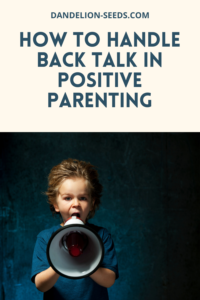
It's incredibly tempting to perceive talking back, rude gestures, and rude behaviors as being "naughty," "bad," or just plain -- well -- rude.
When we use these negative judgment labels, however, it puts us even more on the offensive, and can trigger our fight or flight response. We naturally go into self-protective mode (which is exactly what our brains have evolved to do). In fact, there's even a term for it when stress triggers our fight or flight response in our nervous system: it's called an amygdala hijack (source).
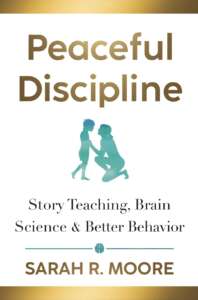
When we're stressed and in fight or flight mode, our brain doesn't respond rationally. It simply makes us react without thinking. We may end up saying or doing hurtful things. In other words, we become the parent we don't want to be.
So, how can parents "override" their triggered reactions and keep control of how they respond?
One way to get control of the part of our brain that keeps us peaceful -- and out of reactive mode -- is to change the words we use to describe what's going on.
It takes practice, for sure. We can't expect to get this "right" overnight, so please be gentle with yourself.
However, every time we practice -- even if we just visualize being the parent we want to be -- it helps strengthen our neural connections in the ways that reinforce what we want to have happen. Practice makes it easier.
As an example, what if we practice reframing disrespectful behavior as behavior of a child who's struggling?
Although we may not appreciate their approach when a child talks back, we can find empathy for a child who's hurting inside. It's easier to push the judgment and frustration aside when we realize behavior issues are simply a reflection of the child's internal state.
Likewise, we can also avoid even positive judgment labels, such as "My child is so good!"
Why should we avoid even positive labels for kids? Simply by virtue of having "good" labels in parenting, our brain also searches for the counterpoint: in this case, the "bad." Behavior is just behavior. No child is always anything, so when we stop using labels of any kind to describe the child, we're less inclined to get into black-and-white thinking that doesn't serve the relationship.
Yes, we can label actions rather than our child holistically, but even that can be a slippery slope. It's more beneficial to reframe even our positive observations in ways like this:
Words have a lot of power; we can use this power in ways that serve the relationship and encourage our ongoing connections. Be specific about the things you catch your children doing right, and they'll be more impactful. Express gratitude when you note these specifics.
Although some parents believe that giving a child consequences in the form of punishment is the only way to curb negative behavior, this often results in a power struggle, more yelling, and all the other things we're striving to avoid.
In fact, negative attention (be it corporal punishment, verbal abuse, removal of privileges, time out or isolation strategies, and other punitive measures further disintegrate the already struggling relationship.
..."[Determining whether punishment 'works' depends whether you're looking at the short-term or the long-term. Short-term, behavior modification systems, including those that promote isolation in a punitive way, can indeed 'motivate' the child to comply.
We're not looking for short-term wins, however. This is fear-based and control-based parenting. Rather than driving kids to 'obey,' it actually drives children to simply hide their behavior from us. They just get better at not getting caught so that they avoid punishment.
Furthermore, isolation-based strategies can damage their trust in us. These strategies don't promote respect; if anything, they damage it..." (source)
Related mini-course: The World Is Tough: Shouldn't We Toughen Up our Children?
Much healthier -- and much better teachers in the long run -- are natural and logical consequences. I'll share examples below, but in short, life is a very effective teacher. As such, we can use our everyday experiences together to model respectful communication.
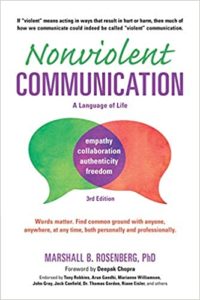
Respectful communication is a learned habit. Just like with all habits, the best ways for kids to learn healthy communication skills is to learn by example. Remember that they're
Related book recommendations that benefit all relationships: Non-Violent Communication, Atomic Habits, Why Won't You Apologize: Healing Big
Betrayals and Everyday Hurts (afflinks)
Book recommendations specific to parenting: What Do You Say? and Parent Effectiveness Training: The Proven Program for Raising Responsible Children
As challenging as it can be, when you hear your child starting to talk back, pay attention to your own approach in this moment. Oftentimes, the effect of "looking in the mirror" is a reminder to soften ourselves, first.
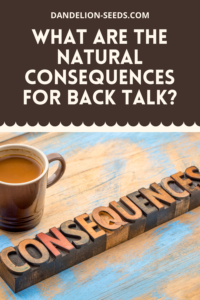
Real life is the best teacher. When children express their anger while feeling "out of control" (which is totally normal, since the part that "controls" their impulses doesn't fully develop until they're 25 - 30 years old!), a natural consequence is that the recipient of their anger won't like it.
Further, if they're talking back to other children, the natural consequences are often that those children won't want to play with them. The same goes for members of the family: a parent or sibling may feel hurt and may not respond well.
The child will realize that people tend to retreat emotionally when their feelings are hurt -- and over time, they'll learn that words are powerful.
To be clear, I'm not saying we should shame or punish a child in any way. Even parents and other family members can be aware enough to use non-violent communication strategies. Here's an example of what that might sound like:
"Hey, sweetheart. When you speak to me that way, I feel angry. I want to have a peaceful relationship with you. Would you be willing to go outside with me and breathe some fresh air before we continue this talk peacefully? I'll be able to listen better when I get out of the house for a moment."
Alternatively, we might calmly say,
"I hear how upset you are. I want to be able to talk about this, but I won't be called names. Please pause for a moment and then let's continue without name calling."
You get to have, and lovingly enforce, healthy boundaries.
Sometimes when a child talks back and the parent wants to be peaceful, the parent can end up feeling powerless. Feeling powerless is not the goal. To the contrary, you still have plenty of power to help heal the relationship.
Here are some logical consequences that teach:
Think of big feelings like a volcano. When the volcano overflows, things get messy. If we can proactively keep the lava low, however, it won't overflow. Some ways to get big feelings out proactively include listening to music with a heavy beat, dancing with large movements, or yelling (the yelling can be about anything -- go outside and yell, "THE SKY IS SO BLUE TODAY!" Whatever. It doesn't matter. The point is that you're "venting the volcano" so it doesn't overflow.
The answer is often allowing the big feelings to exist and releasing them peacefully, rather than stuffing them down (here's how). This can do wonders for the nervous system.
Finally, when a child is talking back, it can be helpful to have a pre-established code word to let you know when one or both of you needs to cool off. The moment either of you uses it, it lets the other know they need co-regulation and connection.
After all, connection is our natural state, and healing together is always possible.
If you're looking for the best Christmas gifts for kids 2021, here's your list! I've keep it simple and practical, and organized the ideas by type. Note that not all of these gifts were just released this year. In fact, by design, I've chosen gifts that have stood the test of time. I'm not "into" trendy; I want gifts that children will appreciate for a long time to come.
Here's how I determined the best Christmas gifts for kids 2021:
Still with me? Great. You're my people. So, on we go to the best Christmas gifts for kids 2021...

I recommend reading to your baby from the time they're in utero, and never stopping. Here are some of my favorite books for babies:

Why just two books? Choose any from my list below and they're also fine for baby. What matters is that you're reading. Read them anything you enjoy reading, and that's appropriate for children, so that you both grow to love the practice. It does not have to be a children's book at this age! Read them the weather forecast if it makes you happy.
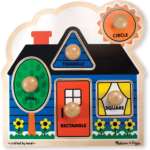
This classic shape sorter (or this one for travel and/or easier organization)
Or, if you want a two-for-one, I LOVE the idea of getting baby their own set of kitchen storage containers -- good for you when baby's not using them, and safe for baby to bang around and experiment with when they want to play in the kitchen. Definitely one of the best Christmas gifts for kids 2021.
This is one of my favorite ages to buy for because, at this age, play is the name of the game 24x7 (no pun intended). Although these gifts are appropriate for toddlers and preschoolers, I've chosen them because, with only a couple of exceptions, my own child still plays with every single one of these. She's 8. I'd call that standing the test of time, and why these made my list of best Christmas gifts for kids 2021.

Ravensburger puzzles (might need some help from an adult, but this is a great age to start)
Cooperative games (we prefer these to competitive ones -- heads up, though -- probably not for toddlers, but great for preschoolers)
Train sets (great for early builders and spacial skills!)
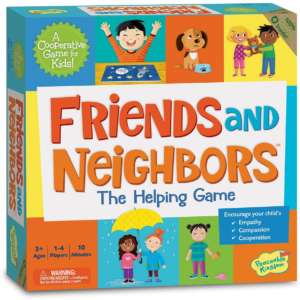
Green Toys (for the bath and for general play -- we've loved these for years)
Scooter (comes in multiple colors -- make sure you get a helmet, too, for safety)
Doll house (one of the things I love about this brand is that you have the option to buy dolls that are People of Color)
MagnaTiles (still playing with these for YEARS to come -- our whole family likes building)
Trampoline or a slide for indoors or outdoors -- GREAT ways to get those wiggles out on cold or rainy days!

Although we have these on our best Christmas gifts for kids 2021 list, these, too, are timeless.
Train set (we get this one out only at Christmas and my child plays with it for HOURS every day)
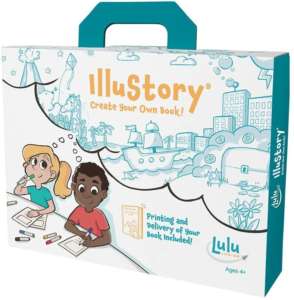
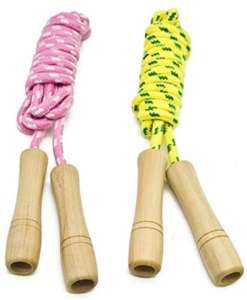
Book making kit (how cool is this?!)
Goodminton game (great indoors or out!)
Ride-On Go-Kart (requires balance and agility!)
Interactive Earth kit with passport (great STEM gift!)

More cooperative games like this one (for older kids)
Carcassonne board game (get the version WITH the extras, because the extras cost a lot more if you buy them individually after the fact)

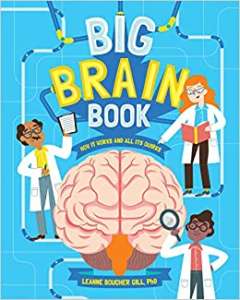
If I'm going to make a list of the best Christmas gifts for kids 2021, I have to include gifts that give back. These are our favorite kinds of presents, actually.
This is a BIG list of wonderful parenting books that I wholeheartedly recommend. Additionally, how about investing in your relationship with your kids through my short, informal, but information-packed online mini-courses?
Below is a partial transcript from Part 1 of my interview with Debbie Reber, author of Differently Wired (afflinks).
Watch the full interview here:
Hello. I am Sarah with Dandelion Seeds Positive Parenting and today I am so excited to talk to Debbie Reber, author of an amazing book for parenting in general, and specifically for differently wired kids.
This is the kind of book that makes me elbow my husband in the ribs and say, "You've got to hear this, you've got to hear this!"
We are both better for your work, Debbie, and I am so glad to have you here today.
Thank you so much! What a nice intro.
Let's dive right into the discussion of differently wired children. Let's talk specifically about getting to know the children that we have, not the children necessarily who we envisioned having long before we birthed or adopted them.
They don't always "look" exactly like what we envisioned they would. When parents learn their child is differently wired, how do they typically come to terms with the child who they actually have and are raising?
Is it intuition? Is it a diagnosis? How do we even come to know this child who we have?
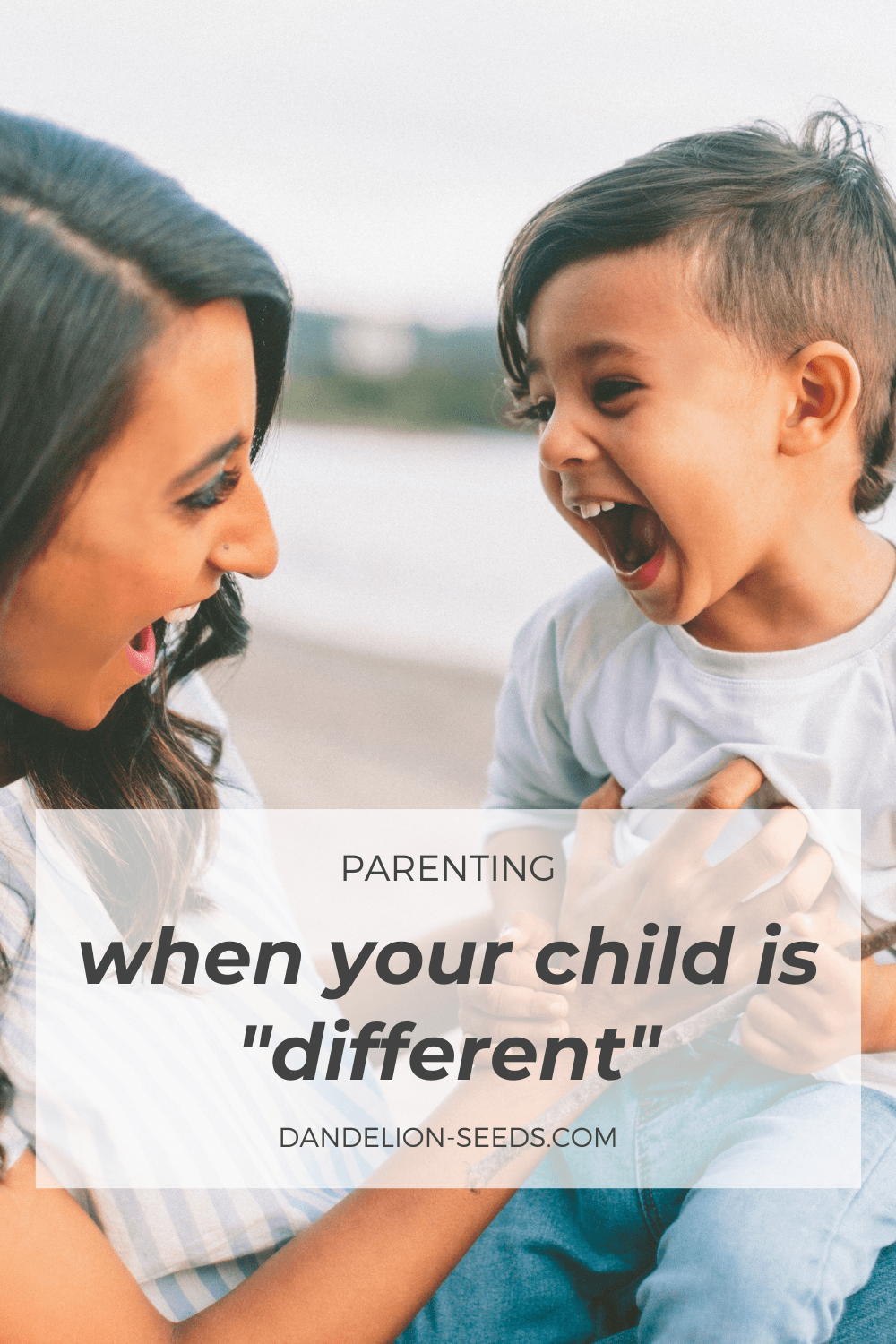
Well, it's a slow process for many of us. I describe it in the book like pulling off a Band-Aid® very, very, very slowly because a lot of kids fall under the "umbrella" of differently wired, as I use it, which is just being neurologically atypical in a variety of ways.
It isn't so obvious, and a lot of the differences are invisible.
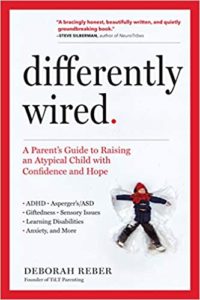
When they're younger, it may look like really intense behavior. A lot of us have kids who were colicky when they were little.
Just more intense -- the more kids like more energy, more movement, more emotions.
So we always kind of have a sense that, "Okay, this is a little more intense than I was envisioning and wasn't expecting it to be this hard." Perhaps those are thoughts that we might have.
And then over time, we start to gather more information, right?
We kind of intuitively may recognize something's going on, but we're also usually looking for evidence that everything's fine, which is always welcomed by us, right?
When we have little ones, we want someone to say, "You know, this is all kind of developmentally normal."
So, often, it's just piecing together information -- feedback from preschool and other teachers, which many of us start getting more and more of us are kids get older. And observations from other people.
And then we start asking questions. Eventually, many of us will go in for an assessment with an OT or with someone to start piecing together the information. But it's a slow process. And there's a lot of self-doubt, I think, that happens for parents as we're trying to determine, you know, is something going on or isn't it? Is this just in my head? - Debbie Reber, author of Differently Wired
[We wonder] are we being overprotective? Are we being helicopter parents? Are we paranoid? What's really going on?
Yeah, absolutely. And I love how you say that other people offer some of the insight that sometimes we're seeking.
We want to know, "Is our kid okay?" We want to know, "Are we okay?"
I know in my experience, I might have felt that something was different. This wasn't necessarily what I envisioned parenting would be, but it wasn't until another parent would come to me and say, "Oh -- is your daughter (and then she'd fill in the blank)."
I'd never even heard that term before. Let me look that up. And lo and behold, "Hey, that resonates. That makes sense to me. I think we have something to explore here." [Or no, that's not on target and I can release it.]
Yeah. I would say that most of my friends would often normalize what we were experiencing. It was very well-intentioned -- "You know, well, my child does this, too" or "This happened to us," and as a way to make me feel better, but that was more confusing to me.
And it was a friend, ultimately, I think when my son was four, when I was trying to explain some of the intensities and challenges we were having, she was the one who said, "Oh! That sounds like a sensory processing issue. You should read this book..."
That's when the light bulb went off for me for the first time. I was like, "Oh, there could be a reason for all of this," beyond just my husband and I not nailing it as parents. - Debbie Reber, author of Differently Wired
Yeah, absolutely -- because of course you were doing the best you could with the information you had.
Let's talk a little about our frame of reference.
Most of us grew up naively thinking that everybody was more or less 10 percent within the same range, neurologically speaking. Is it that we are simply more aware of neurological differences at this point or have children always been differently wired, and we just kind of said, "Oh, that child is just a busy child" or whatever.
How have the labels changed? How is the understanding changed over time?
I think the understanding has changed a lot. In raising my son and doing the research for this book, I reflected so often on kids that I went to school with back in the 70s and the 80s.
I was like, "Oh, oh my gosh, that's what was happening with this kid, and with this kid," and I I started realizing, you know, just kind of piecing it together. These kids who, back then, even something like dyslexia was not really talked about her understood.
And so it was really grouped on intelligence or the weirdos or you know, like we just had these kind of broad labels: the bad kids.
The kids who had no emotional regulation were just bad kids and they got punished or they dropped out of school. They went down that road.
And that really breaks my heart when I think about that and recognize, "Oh my gosh. So many of these kids had ADHD, or were on the autism spectrum, or had these other differences."
And so I think we're so much more attuned to it now.
Even from when my child was in early elementary to now -- he's 16 -- I feel like we're still evolving as a society and there's just more and more awareness, but it's been a long time coming.
Yeah, without a doubt, I had the same reaction you did when I think about the kids who I grew up with, also in the 70s and 80s.
It really takes me to a place of compassion and empathy and my strong mama heart wants to go and hug all of these little versions of these now adults, and say, "Now I understand. You weren't trying to be difficult or whatever label you may have had. We just didn't understand you. And as your classmate, I'm sorry I didn't know that about you because I would have loved to show up for you better."
Yeah, and so many adults are discovering their own neurodivergence through raising their child.
I actually did a couple podcast episodes on this where I interviewed adults who had realized they were on the spectrum or had ADHD in their 40s.
What does that do? There's a sense of relief. There's also a sense of sadness, right? And all those pieces fitting together and then realizing, "Oh my gosh. This little person that I was for all these years, and my needs were not being met, and this is how I internalized it. It's really challenging for a lot of people to reconcile.
It is. You know, and at the same time, to your point, a lot of these adults get to rewrite part of their stories. If an adult grew up thinking, "I'm just a tricky personality." "I'm just hard to love." "I'm just hard to be around." "I'm disruptive" -- all of the lies that they were fed as kids -- now they can say, "I did the best I could with the wiring that I had -- and look at all of the ways that I did learn to cope and to regulate and to exist in a world that wasn't necessarily built for me. Look what a superpower that was to get where I am today."
And I love how you had it from a place of empowerment rather
than a place of, you know, self-punishment or any of the negative things that parents could be doing. Now they're saying, "Hey, I've got this too, and now I understand all the better what my child might need."
Debbie: Yeah, a hundred percent. For me it explains the class clown label that I was given in the senior poll. "Best excuse maker." So that gives you a little sense of who I was in school.
Sarah: Awful, awful labels. Yeah, I was "most reserved" and I hated that one. This doesn't define us anymore, does it.
Debbie: Absolutely not. No. I'm still a bit goofy, but I'm definitely not a class clown anymore.
Sarah: Right there on the goofiness with you. That is an important element of success in today's society.
Debbie: [laughter] Yes. True.
One thing that I love so much about your book is that you don't limit "differently wired" to one specific medical diagnosis. You talk about a broad range of things -- ADHD, Asperger's, ASD, giftedness, sensory issues, learning disabilities, anxiety, twice exceptional, highly sensitive children, and various combinations thereof -- and that's not even a full list.
This is not a single, "Ooh, I can point right here and say that's what it is" and build our life around that. Many times these things coexist together.
So for the parent who is getting, be it a single diagnosis or some combination of these things, how does the parent keep from getting totally overwhelmed?
And what does the parent do with this information once they have it?
I think labels are so tricky and I certainly talk a lot about them. I've thought a lot about them.
Labels can be super helpful as we're getting information because it can give a context for things that are happening with their child. It can open up the door to services or accommodations or other types of support that we need for our kids, especially, you know, legally, depending on what the diagnosis is, but they don't actually solve anything.
I used to really want the label because I wanted an answer, right? I wanted to know this is what it is and I wanted the answer so I knew exactly what to do to fix it.
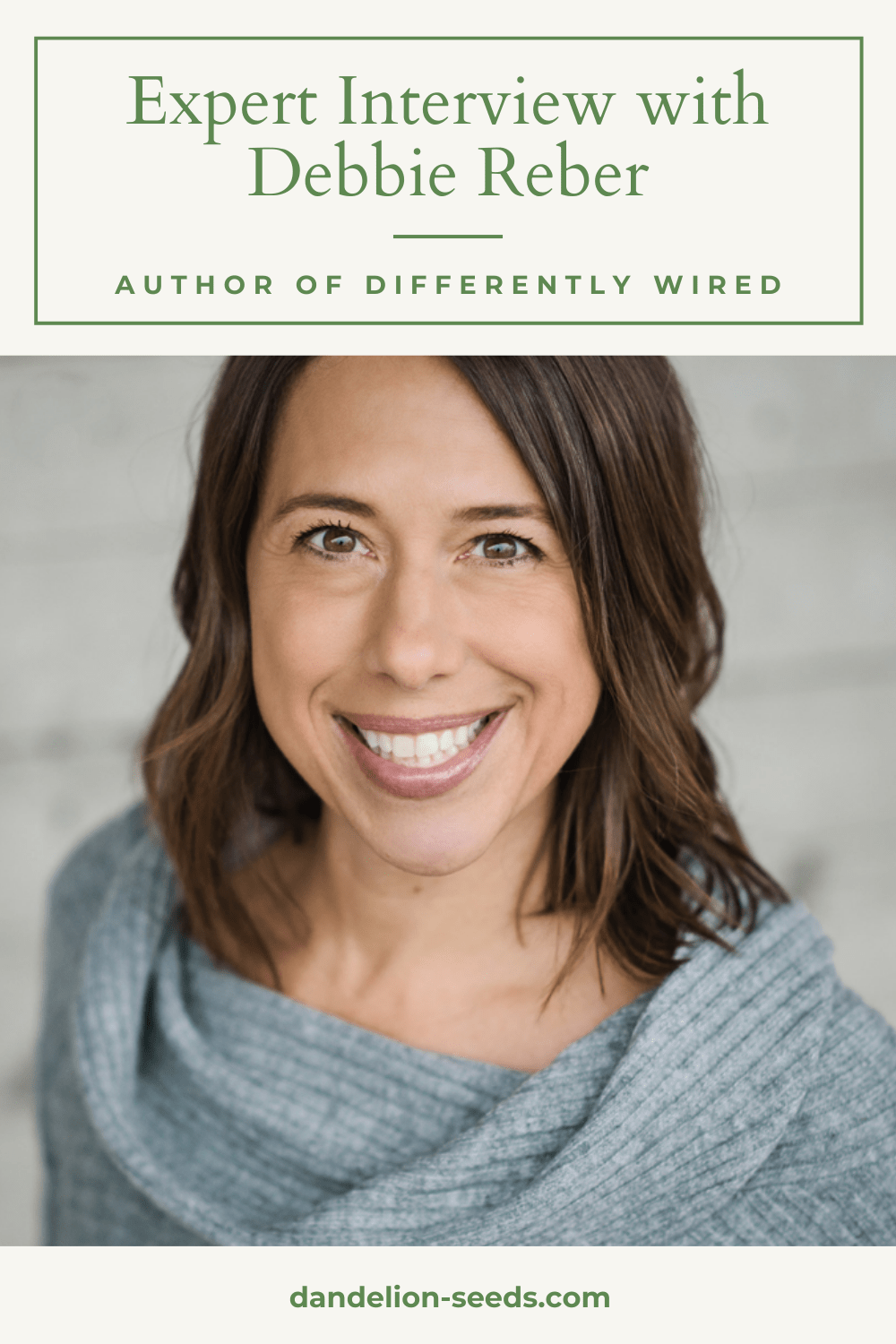
And I think that's what so many of us, especially when we're earlier on in this journey, we want an answer to explain what is challenging in our lives and ultimately, a label -- well, I can give you some insight into a course of support or areas to prioritize your support on.
But [a label] doesn't change who your child is and isn't -- there's no playbook, like, 'Do this, this, and this and that will fix or solve for all of these symptoms.' - Debbie Reber, author of Differently Wired
So I think that they're tricky. In Venn diagrams of differences, you'd see so much overlapping between, you know, profoundly gifted, ADHD, and autism spectrum, for example. Sometimes they could fit into any of those buckets.
What I like about the term "differently wired" -- it's not a medical term, obviously, but it's a positive term that parents can embrace and hopefully reframe what could be seen as a negative or a deficit or a problem that needs to be solved. Instead, it's about an understanding that my child's brain isn't considered neurotypical; and my child is a unique thinker; my child's brain wiring is is outside the box and that's okay. - Debbie Reber, author of Differently Wired
It's a difference.
And so I really love that language as a way not just to feel more positive and optimistic. But also, when we are honed in on this one little diagnosis, we're very narrow in our vision. I feel like societally, that keeps us marginalized because we're all in our own little buckets.
And so we can talk about well, it's not that many kids who are dealing with this, or it's only this percentage of the population has this issue so it keeps them all "problems."
But when we expand and more inclusive and say actually there are so many people whose brains are not considered "normal," we have to accommodate for that.
We have to take a step back and look at what are we really doing in terms of how we're educating kids.
We're educating to a majority that probably isn't even a majority. I think that differently wired kids make up more than 50% of the population if I were to put money on it.
I agree wholeheartedly and I love how you reframe the labels. So much of our ability to come to terms with who our child is, is to look at them in a positive light, you know?
I often talk with my clients about reframing a tantrum as an emotional release. It's the same thing, but it really feels different if we look at it as this is a healthy expression of emotions.
The same is true for what you said. If you have a child whose brain simply differently wired, that doesn't make them less worthy of love, compassion, all of the gifts that we have to offer as parents -- and also as a society.
[And I agree that the numbers of differently wired kids are much higher than what's typically stated.]
Related expert interviews: The Explosive Child, Highly Sensitive Children, Childhood Anxiety
You also said another word that I want to go back and highlight for a minute. You talked about our desire to "fix" our differently wired kids. This reframing really helps us reframe the need to fix our kids, too, doesn't it?
Yeah, because fixing implies that there is a problem or that there's something broken. And that is because we are holding up our kids to a neurotypical standard. We're suggesting that there is one way of "being" that is acceptable and normal and okay and everything else...well, and in order to to fit into this "normal" bucket, all of these issues have to be fixed or addressed.
That does such a disservice to so many people. Again the 'normal' side of people -- there's nothing 'normal' about it.
The mental health problems [people have] and the ways that people compensate to get by in society -- and those who struggle with so many things like executive function and paying their bills and being organized and running a household -- all of those things -- everyone's making it up as we go along right? There's no one gold standard. - Debbie Reber, author of Differently Wired
And so this divide, and thinking that these other people aren't somehow broken, it just really does such a disservice. It implies that they're not okay in who they inherently are. To give a child that message is just heartbreaking to me.
It is. And it doesn't have to be that way. We can reframe it, and it is on us as the parent to say, "I'm going to change the narrative, not only for my child but also in the narrative that my child shares with those around them as they grow up, too." That's so important.
Let's talk a little bit about fear. One of the most common themes that I hear from parents is fear.
Suddenly, they're raising a differently wired child who may not feel at all

familiar to them -- or perhaps feels very familiar to them. Either way, it's a little bit scary sometimes as a parent, wondering how we can best support our child.
How can parents move from a place of fear to a place of trust and growth in parenting their differently wired child?
I think that it's really important to to know that fear is part of the human experience. It's part of our inner self trying to protect us and keep us safe.
We don't want to make fear [of raising a differently wired child] to be a bad thing. We want to have a relationship with it. We want to see it for what it is. - Debbie Reber, author of Differently Wired
I encourage parents to get really open and honest with themselves about investigating what things they're really worried about. What are their biggest fears?
They're often about this unknown future. Because the path is very unclear and not laid out before us, and the way that we assume everyone [else is] raising a neurotypical kid.
Related guest post: One Mother's Journey of Raising an Atypical Child
And so yeah, when we're kind of spiraling out of fear about future unknowns and all of those things, and "Can I do this?" and "This is going to be hard" and all the things that we do -- yeah, we run into problems. And we're not parenting from from a place that would really most benefit our kids.
Understanding what those fears are, questioning those fears, and choosing love, you know, I talked about choosing love and possibility.
I love that quote by Neale Donald Walsch: "All human actions are motivated at their deepest level by two emotions--fear or love."
When we start to understand what making a choice from fear feels like in our bodies, like usually know we're doing it. Our gut my may be saying, "This is the wrong move, Debbie" but in my head, I'm like, "But X, Y and Z."
So we're living in our heads and not our bodies.
So, if we can start to tune in more with our bodies and and parent from that place; make choices from that place, we will start getting feedback that that was the right choice to make. It'll feel lighter. - Debbie Reber, author of Differently Wired
It feels scary. I'm not going to say it's not scary, but it'll it'll feel like a lighter choice or we'll start to get feedback that the results are, "Oh, that was the right decision to make." And it's kind of like a muscle that that we're building.
I think, again, we have to uncover the fears of raising a differently wired child and acknowledge their existence; make some sort of uneasy alliance with it and then keep pushing ourselves to choose love and possibility instead.
See more from Debbie Reber, author of Differently Wired:
"Is Santa real?" With that simple question from my child, my heart drops. On one hand, I always and unequivocally want to be honest. On the other, I want to preserve the innocence and magic of childhood.
I sometimes wonder whether my child already knows the answer and is just checking whether I'm being truthful about it. I also wonder whether she wants proof that he really IS real because she sincerely wants to believe in Santa Claus. Both options co-exist in my thoughts as I consider how to respond. Thoughtfully. Carefully.

"Is Santa real" is one of the most loaded questions of parenting. If we answer that he's not, it's the end of a certain kind of innocence; a little bit of childhood traded in favor of one step closer to adulthood.
Stories of Santa Claus, otherwise known as Kris Kringle and Saint Nicholas, have circulated around the world for hundreds of years. Were all those generations of parents wrong?
Believing in Santa is a wonderfully pure part of childhood. At the same

time, as part of truly respectful parenting, we wonder if we should be upfront with our children about Santa and Mrs. Claus, the North Pole, reindeer, elves, and all things jolly-Christmas. Certainly most kids believe -- but should mine, too?
Early on, I decided that I didn't want to mislead my child. Although I'd loved the magic of Christmas when I was little, I wanted my relationship with my daughter to be based on honesty and transparency about everything. No exceptions -- just straight-up loving and gentle truthfulness.
Therefore, I decided I didn't want to tell her about Santa. We'd just do our "thing" every December, celebrating the true meaning of Christmas for our family, and that would suffice. We'd navigate the trickier waters as she grew older.
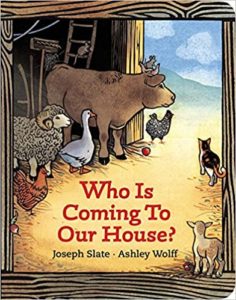
My husband and extended family weren't on board with that, however. They wanted her to know Santa; to love him, like we all did when we were children. Truth be told, I have fond memories of sitting on the sofa next to the Christmas tree, staring at my empty fireplace, wondering if I'd be witness to Santa's appearance.
I liked putting out a bowl of sugar and some carrots for the reindeer, and adding some sugar cookies for the guest of honor. It was fun to see the reindeers' "nose prints" in the sugar the following morning and the cookie crumbs upon the plate.
Remembering these things, I altered my plan.
I decided we'd wing it year by year. We'd also be intentional about which parts we'd "wing," however.
When my daughter was very little, I started engaging her in "being" a Santa Claus for someone else. To be clear, I never flat-out told her that Santa wasn't real. I simply didn't comment one way or the other, and "playing" Santa Claus for others seemed like a good way to gently and oh-so-gradually clue her in while helping her learn the importance of doing good deeds for others.
With this approach, starting when she was about two and every year thereafter, we'd pick strangers for whom we'd plan to do a random act of kindness -- an elderly neighbor, someone requesting a donation of food or supplies -- and then we'd follow through in helping that person somehow. I called it "being a Santa" and explained it as the goodness of doing acts of service for others without expecting anything in return.
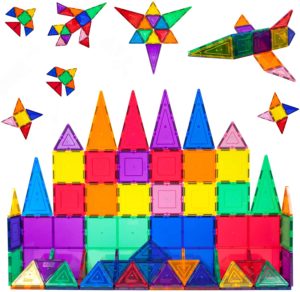
At that age, she never questioned whether Santa was real. She simply went along with it.
As she got to the next Christmas, other well-meaning family members started telling her the story of Santa. Whether they played music like "Santa Claus is Coming to Town" for her, wrote his name as the giver of gifts, or simply asked her whether Santa had gotten her anything after the fact, suddenly, he was very much alive in her consciousness.
Of course, she started asking me about him. Children are great at intuiting the very questions we'd prefer they not ask us directly.
With bright eyes and great enthusiasm behind her question, she made it very clear that she wanted Santa to be real. The magic of Christmas was important to her in this way. I didn't "feed" her belief by talking about him, but I welcomed the joy she found in him.
I treated him like another beautiful decoration to behold on the mantle -- something we acknowledge, but that we wouldn't spend a lot of time admiring.
Around that time, I decided to follow her lead. I wouldn't tell her he didn't exist, but I also wouldn't tell her that he did.
Is a non-answer a lie? I don't think so, in this case. Like all questions from kids, there's a time and place when they're ready to know certain things. For me, "Is Santa real" falls into this category.
When she put me on the spot, I'd turn it around and ask what she thought. She always confirmed that he was, indeed, alive and well, living contentedly at the North Pole. I'd smile in response; perhaps give her a kiss. Sometimes, I'd talk about how wonderful it is to be a Santa. (There it is again.)
Santa Claus comes no matter what. Period. As part of gentle parenting, her behavior has nothing to do whether Santa will come via reindeer to our
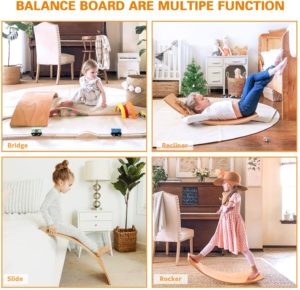
rooftop on Christmas Eve. There's no discussion of naughty or nice. We never talk about coal in the stocking or any of the other popular threats parents use.
Santa simply visits because my child is a child. That's the only prerequisite.
Needless to say, Santa doesn't judge others' behavior, either. It's not part of his schtick. He's entirely benevolent.
If other well-meaning parents or other people say to my child, "Were you a good girl this year?" I'm quick to respond on her behalf, "Of course! Santa has nothing to do with that. She's a great kid." End of story.
We minimize the focus on Santa by limiting the number of presents from him. Granted, we're not a present-focused family, anyway; commercialism isn't our "thing." Still, Santa may leave her gifts in her stocking and the rest are up to Mommy and Daddy. Or, Santa may give her a couple of small-ish gifts under the Christmas tree, but the ones about which she'll get most excited are not from him.
And then we move on joyfully together. She's never questioned the quantity of quality of Santa's gifts.
I know because honesty worked for the Easter Bunny. He was my litmus test. My child figured out years ago that Mommy and Daddy are really the Easter Bunny, and when we had the discussion in the way that we did, she was absolutely fine with it. A large part of her ongoing trust in us is that we were honest with her when she was ready for the full story.
We didn't need to overcomplicate things by talking her out of that which she'd discovered for herself.
Somehow, she still hasn't made the connection between the Easter Bunny and Santa Claus, even though it's been two years since she learned about the bunny. So, just because some magic changes, it doesn't necessarily disappear all at once. It can be a gradual process. I felt relieved to learn this.
I've seen the truth work time and time again. It's part of how I've become my child's "safe place" emotionally. When she asks, "Is Santa real?" I want my answer about this topic to be no exception. If I'm going to be her emotional rock throughout her life, these are the very details that matter.
I've had to do some backtracking when my child focused more on the Santa piece than what made me comfortable. So, I get it.
If Santa is already part of your December narrative, you can focus more on how good it feels to be a Santa for others. You can give Kris Kringle a smaller role this year, even if he's still present for your kids. You choose where you put your focus.
You're not spoiling it for your children if they do want to believe, and you're ingraining in them that they can do good works for others.
You can promote the spirit of Christmas for exactly what it is. Know what and why you and your kids are celebrating. There's a good message there; and one they can carry with them forever.
They'll figure it out when they're ready. And if you choose never to do the Santa thing, that works, too (just let children know that when other kids ask them, "Is Santa real?" -- it would be best if they refer them to their family for the answer). It's important that kids understand and respect family differences; you're modeling that for them. Christmas means different things to different people.
I know this for sure, though -- I am glad Santa exists. Because he does, in the goodness that's all around us every year. Children see it clearly. I do my best to see it, too.
*
"Is Santa real?" also coming soon as a mini-course. Check out our current offerings and choose one free course from more than 40 topics.
We've been hearing a lot about the "calm down corner" as a more peaceful alternative to the "time out" or "naughty step," but are we really just dressing up the same punishment to make it sound better?
In short, it’s all about intent -- and more importantly, the child’s perception of that intent.
Some children do well with sensory and/or comfort items when they’re upset, and some adults create a special space -- a calm down corner -- uniquely designed to hold these items for their child. It’s important to differentiate between disguising a “time-out,” when intended to be punitive and cause distress for the child, from a sacred, peaceful place that is truly

comforting.
Common items that adults place in the calm down corner are sensory items, stuffed animals, sticker or coloring books, and soft blankets or pillows.
When used punitively, consistently sending the child away to process their big feelings, even if to an otherwise “nice” calm down corner that’s separate from the adult, sends the child the message that our love and support are conditional; and that only certain feelings and behaviors are safe to show us.
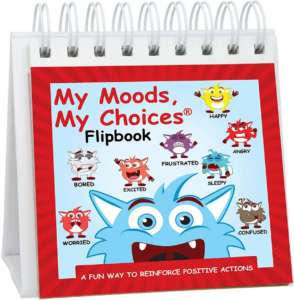
It won't matter how many comfort items the child has if connection with their caregiver is lacking.
A punitive approach does not make the child's feelings go away. Instead, it risks setting them up to develop coping mechanisms that may or may not be healthy as they continue to grow and need support. We want them to feel safe to come to us as they get older and face bigger challenges.
Related mini-course: The World Is Tough: Shouldn't We Toughen Up our Children?
That depends whether you're looking at the short-term or the long-term. Short-term, behavior modification systems, including those that promote isolation in a punitive way, can indeed "motivate" the child to comply.
We're not looking for short-term wins, however. This is fear-based and control-based parenting. Rather than driving kids to "obey," it actually drives children to simply hide their behavior from us. They just get better at not getting caught so that they avoid punishment.
Furthermore, isolation-based strategies can damage their trust in us. These strategies don't promote respect; if anything, they damage it.
Although I don't recommend time-outs for children, I absolutely do recommend them for adults when they're having trouble controlling their anger. If an adult can create their own version of a calm down corner and retreat to it for a moment while they collect themselves, that can be a very wise approach.
The only caveat is to ensure the child is in a safe place while we take those moments to regroup.
Related: Positive Parenting Mini-Courses - Log In to Get One FREE

If you do opt for a calm down corner for a child, I recommend keeping it somewhere close to where we can be near or with the child, and if the child is open to it, stay there alongside them. Co-regulation helps the nervous system find balance and is shown to increase connection between parent and child.

Further, co-regulation teaches our child that we’re an emotionally safe place for them to share their feelings. With this approach, we set the stage for ongoing trust and open communication.
We’re planting seeds about whether they feel they can come to us unconditionally. Naturally, we want to be a safe haven for them.
This trust that we're their safe haven doesn’t come out of nowhere. They learn to trust in our emotional availability when they’re young.
If we say, “You can always come to me no matter what,” our responsibility is to follow through on that.
When we consistently use a time-in instead of a time-out or punitive calm down corner, it creates a natural state of bonding and connection, and therefore, no child can perceive our intent as anything but positive.
How it works is that we simply choose to do something unrelated to the problem at hand. It doesn’t mean we’re sweeping the problem under the rug. To the contrary, we’re calling it out in plain sight while also showing
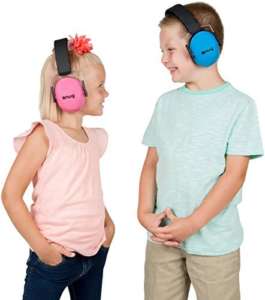
our child that our relationship matters more than any problem we face together.
We can say something like, “I’m uncomfortable about [x] having happened, and we’ll address it shortly. First, let’s calm down together. We’ll solve the problem best when we’re both feeling peaceful.”
From there, we go and “do our thing” together. Consistency often works well, and we can customize it to our child’s personality type:
What doesn’t work as well is to go “cool off” in our own spaces. Once again, co-regulation is at the heart of the time-in. It’s all about feeling emotionally safe together.
Once everyone’s regulated again, we can address the problem from a place of curiosity and peacefulness.
A calm-down corner can, indeed, be an effective strategy when it's a positive space for both parent and child. It isn't the only tool, though -- and connection will always be a parent's, and child's, best bet.
In Part 1 of this interview excerpt, Rachel Rainbolt discusses natural learning. She addresses common fallacies and how we can embrace it as a valid form of education.
Hello. I am Sarah with Dandelion Seeds Positive Parenting and I am so excited today to talk to a kindred spirit, Rachel Rainbolt, of Sage Family.
It seems like I should have met you a thousand times in real life. We were homeschooling in the same part of the country for a very long time. We have tons of mutual connections. And we are now just meeting for the first time.
Oh, I love that feeling. I love when like the two souls finally cross and you're like, yes, you're my people. So yes, it's amazing that we hadn't met sooner, but I'm glad we've connected now. I look forward to all of that brings in the future.
I'd love to hear a little bit about you and your journey of natural learning.
First of all, I have to say I love your name -- Sage. The connotation is just lovely; the healing herb as well as the inference of wisdom. Tell me a little bit how you got started and what you do these days.
Yeah. Well, first of all, I did this business with the birth of my second. His middle name, Sage, is where it came from.
It's like the nature and the power of nature combined with wisdom and insight and evidence, and then of course my love for my kiddos, so it felt like a good fit for my work.
Presently, I have three kiddos who are 15, 12, and almost 9. I am a homeschooling mama. We have been homeschooling for I don't even know how many years at this point.
Those of you who have read the Sage Homeschooling book (afflink) know that we put my oldest in school. She was in school for a couple years and then we bailed. We have been homeschooling ever since.
I have a master's degree in marital and family therapy. When I graduated,

rather than going into private practice or agency work, I wanted to continue doing the work. I was passionate about helping families. But I wanted to do it in a way where it could be integrated with motherhood -- and I could still be fully present for my kids and homeschooling my kids.
So, that is how Sage family was born. Over the past 12 years, I've written a series of books, homeschooling being the most notable of them.
I have a bunch of online classes, the bucket system being the biggest one, and then I've been doing coaching with families around the world.
You said such a magical word a moment ago: "integrated."
One of the things that I love most about what you do is you don't really seem to describe homeschooling as a method per se. You talk more about natural learning as a way of life.
That ties in so beautifully with gentle parenting and this holistic view of what goes on within the walls of your home.
Let's help parents understand that how natural learning can happen outside of the traditional brick-and-mortar version of education.
How can parents really come to terms with trusting their children as partners in their education?
Yeah, there's so much to that question. First, the integration piece is one of my battle cries.
I think that for women, especially, there's this societal expectation of compartmentalization -- you're a lawyer over here, but you're a mother over there. You're a you're a wife over here...It's as if all these things need to be separate and that sets everyone up to fail. It's not sustainable. - Rachel Rainbolt on natural learning
It doesn't honor the fullness of who you are. It short changes everyone because when I show up as my full and authentic self, everyone benefits from that.
Now for the the lifestyle bit of the homeschooling and natural learning, yes, I love that you picked up on that nuance. I talk a lot about that. It's not an educational approach per se.
I mean, technically, it would check that box, but that's not how we apply it. That's not how it plays out or how we live it.
It really is just a lifestyle.
It's not something that we do between the hours of 9 a.m. and 2 p.m. We do it around the dining room table. It's happening all the time, as my kid is falling asleep in a cuddle with me. That's natural learning, too.
It happens as my kid is working on the coordination to floss their own teeth. That's natural homeschooling, too. I mean, all of these things are natural learning.
It's all of the facets of daily living, in addition to the bigger, more typically 'school-y' stuff that my kids do. There are really no distinctions or delineation or subject silos for us. We're just always in this state of wonder, following our curiosities, honoring our passions, and supporting our challenges. - Rachel Rainbolt on natural learning
All of that is really playing to our strengths; nurturing them. All of that is part of natural learning.
There's this misconception that when your child turns five, it's like all of a sudden, the only way to learn is sitting at a desk, going through worksheets, being lectured to by a teacher in a classroom -- but nothing fundamental changes about the way human brains work or the way psychology works, or the way learning works -- at the age of five.
The exact same way they learned before the age of five.
Your kid can learn to read the same way they learned to talk; in the same way that they learned to walk.
Yes, beautiful -- and we certainly don't give them talking or walking lessons. I mean, aside from helping my child learn how to say "Mama" when she was tiny and only knew, "Dada! Dada!" -- I might've been guilty of focusing a little extra more on the "Mama" part for awhile.
Besides that, though, we don't "teach" our kids all the words. And we don't say, you know, "Put your left foot in front of your right..." for walking. Kids just learn these things.
The notion of that is completely ludicrous and absurd. We just trust that it'll work out. Even in your example of emphasizing "Mama," we still do that in in all of the areas of learning. It's normal.
If I'm trying to put something together and my husband has put this thing together before, he might be like, "Oh, look. You turn it this way. Turn it around. There you go. Yeah, that's it."
That's normal. That's a part of how we learn things. That's a perfect example of how how we can be supportive.
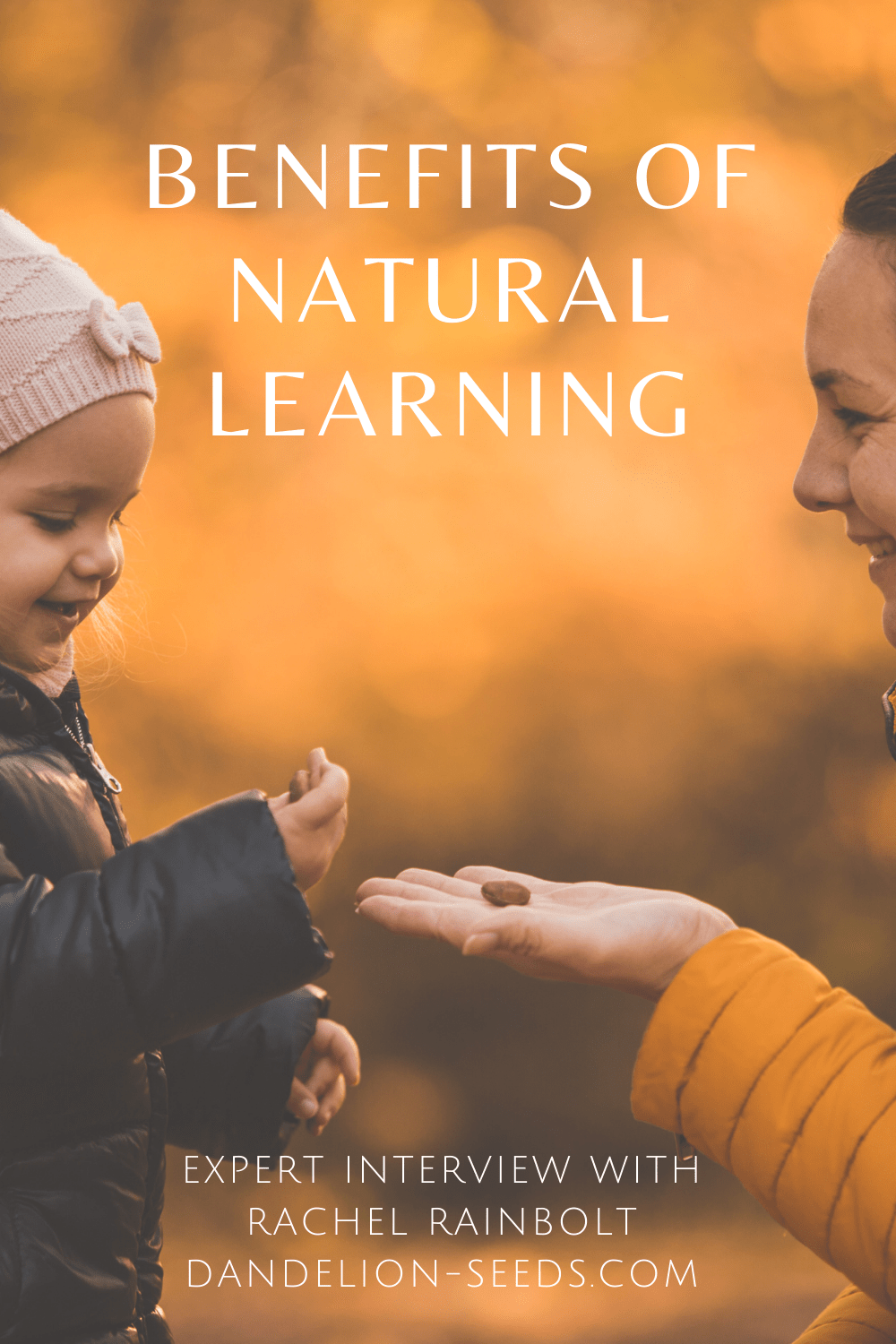
I think the environment plays a lot into natural learning. I will plant things in the environment based on my kids' interests that might resonate with them -- and then let go of my attachment to what they do with that object or that thing.
We can be supportive of their learning journey without taking ownership.
If you want a self-driven, intrinsically motivated human being, then you have to let them own their learning journey. It's their life. You get to be a coach, guide, support, and consultant along that journey. - Rachel Rainbolt on natural learning
I love that so much. You just said another magical word in my teaching vocabulary: "invitation." We invite our children into the exploration of that which we are exposing them to. If it is forced, that comes from the parent and isn't natural learning. This is an invitation.
You also talked about a really key point that I want people to internalize. You talked about relinquishing control. We need to trust that our children are going to grow and learn and pick up what they need to pick up in life.
Can you talk a little bit more about that process of relinquishing control and replacing it with a sense of trust?
See related mini-course: Ways to Make Homeschooling Easier
That's really a stopping point for a lot of parents as they try to engage in this way of learning.
Insecurity sort of breeds anxiety, and anxiety breeds control. When we feel anxious, we lean way far forward and we take control of things. Interestingly, studies show that when we take control, it reduces the parental anxiety and it increases the kid's anxiety. When we lean forward, they have no choice but to lean back. If you're taking up all the space, there's no space for them to grow into. - Rachel Rainbolt on releasing control in natural learning
If you want your child to be motivated and passionate and driven and independent, you have to give them the space to grow into all of those qualities.
Trust will grow one moment at a time, one interaction at a time, one gesture at a time.
Look for an opportunity where your kid is making a request or wants some sort of freedom. If your anxiety is telling you, "No, take over here" -- instead, just lean back and observe.
Just observe what happens. Notice what's happening in your kid. Get really curious. Wonder what's happening within them; what things are developing through this experience.
...
I have never, ever had an experience where I leaned into trust and I later regretted it. - Rachel Rainbolt on natural learning
I've never been like, "Oh, I really I pushed myself beyond my comfort zone there and I trusted them to know themselves and it was awful" -- because no matter what experience may have been, they learned from it.
It's this golden experience that they get to have; they learn more about themselves. They learn more about the world. Even if they fall down, they integrate that experience into their web of understanding about the universe and their place in it.
There's all this gold that comes out of those experiences, even hard ones.
Exactly. It harkens back to the walking example that we shared a little while ago. If a child falls down, they will learn in that moment, "Oh, maybe I don't just keep walking straight off that step. Maybe I need to bend my knees next time."
We can look for opportunities to teach "in the moment." Last night, for example, my child asked why oil and water don't mix. That's not a question that I dismiss. That's one where I can say, "My child is inviting me into her learning." Guess who has a science unit coming up on why oil and water don't mix?
My child is interested. My child is invested in this, and from there, I can trust that she is taking that metaphorical step to the next level of her science education, in this example.
She's growing and learning every bit as much, if not more, than if I'd have put that worksheet down in front of her saying, "Here's a picture of oil and here's a picture of water. Let's study it now." That would have been zero context. She wouldn't have cared. Now, she cares.
A lot of the current teaching methods are not the same as natural learning. It's not about retaining and spitting out the information for a test. You never think about it again. Natural learning can enable a deeper assimilation.
I love your example about falling while walking. Think about the role of the parent in that in that learning.
It's not our job to protect them from falling. It's not our job to get them walking. It's our job just to be there with loving arms if they come to us crying because they hit their knee on the floor. Be there when they need us and cheer them on when they're proud of themselves. - Rachel Rainbolt on natural learning
We just need to continue that beyond the age of five. It's this deeply intuitive natural version of connection that human beings are hard-wired to thrive in. We just need to carry that through for the long haul.
Let's jump to the naysayers for a second because obviously you and I are totally on board. We are speaking the same language here, but somebody is going to be watching this video or reading it later as a blog post and saying, "All I know are worksheets. All I know is the method with which I was raised. Prove to me that your method works."
How do we do that? What kind of validation do we have that natural learning works?
I love this question because I think even more so than the homeschooling parent being the naysayer, I find that it tends to be others who are naysayers and sometimes those voices work their way in and get stuck [in our minds].
When the parents come to me with those those questions, it's not really their questions.
First, I want to be really clear about where those fears are coming from. Whose fears are those? Do they belong to me or do they belong to someone else? - Rachel Rainbolt on addressing the naysayers of natural learning
Because if there's a concern you have, that belongs to your child or belongs to you.
I want to pay homage to that and I want to sit with the question of if it's a fear or judgment that belongs to someone else. [If the latter], I want you to give it back to them.
We're talking about letting people to have ownership of their own stuff.
Let your kid on their own journey. You are on your own journey. Let other people own their own journey.
If someone on the street were to come up to me and say, "Does this work?"
I'd be like, "Yeah," and then move on with my day because I'm not responsible [for their judgement of natural learning]. It's not my job to make them feel better about my life choices. They can feel however they want to feel about it. They get to own their feelings and their experience.
The short answer is yes. I'm all about evidence-based practices. There's always evidence, depending on the question.
So for example, does unschooling work for math?
We have a lot of evidence that shows that the level of math anxiety that kids start college with actually puts them at a disadvantage, whereas kids who have had formal math instruction when they start college progress farther, faster.
In daily living, the average person only uses math up to about 5th or 6th grade. Any math beyond that is considered specialized math.
So for me, who runs a business and a family, I consider myself very successful. I live a very happy and fulfilling life. I don't use math beyond 5th grade math.
I know this us because I've gone through all of the math curriculum at various times with different children of mine, interested in learning different things. Beyond 5th grade math, I don't ever use it. I never, ever used it, even in grad school.
I use statistics a lot, and statistics is a pretty isolated specialty that has nothing to do with, say, geometry. I wasn't doing geometry at any point in college or grad school, so math beyond that is specialized.
If you have a need to learn something and a desire to learn something and you know how to learn, you can learn any of those things.
If a child around the age of sixth grade has never had any formal math instruction instruction at all, they can learn the first five years of math something like 20 instruction hours.
So, it takes 20 hours to learn K through 5 math if you are in sixth grade. Once your brain is a little older, you can learn this stuff really quickly and really easily.
If you had never been taught the days of the week -- no one ever sat you down with a chart and made you recite, "What day is it today? You know, there's a poster on the wall. Today is Monday."
It drives me crazy when I see teachers or homeschooling parents posting little videos or photos of them drilling their kids. Like, how do I get my kid to sit for this and they're not reciting it back to me.
Do you really think that your kid's going to reach adulthood having no concept of days of the week? As if their friends will say, "Hey, you want to meet up and hang out on Friday night?" And they're like, "What's Friday? My mom never taught me what Friday is."
If it's relevant to us, then we learn it. If there's like a gap in our knowledge or understanding, we're driven to understand it and to learn it and to know it. - Rachel Rainbolt on how motivation works in natural learning
I'm curious what you mean by "work."
Does work mean that my kid goes to an Ivy League college?
It makes me curious about your definition of success because I would argue that my definition of success would be, for each kid, whatever their definition of success is.
I love that so much. And I'm still giggling about your Friday night example, because that was classic.
Case in point about contextual and natural learning, I asked my seven-year-old daughter recently, "Hey, do you want to grab about a third of the pizza out of the fridge?"
I haven't taught her fractions, but she went and she figured out the pizza.
She realized, "Yeah, that's applicable to my life. I get to eat a third of a pizza right now." Fractions make sense in context.

Yes, and even as they get older that can include things like classes or more academic-type things. They're driven to do that because it's tied to a specific goal.
My teenager is very excited. She wants to be a lawyer and she's really excited to do this dual enrollment college program. So next fall, she'll start at the community college.
She's taking an essay writing class through Brave writer. She's reverse engineered the skills that she wants to work on because it's connected to something meaningful that she wants for her life.
As they get older, even if things might look a little bit more academic or specific or focused, that's all unschooling. This is all self-driven based on what she wants for her life.
And that's a beautiful thing.
What a great example. Let me emphasize it for one more second for those who are reading or watching this. Your daughter 15 years old. She's ahead of her game academically if she's already looking at dual-credit scenarios, and that's from unschooling.
...
She took the entrance exams for that program when she was still 14 and she passed all of them.
So of course, yes, I believe al of my children are brilliant and wonderful, and they're totally normal children.
None of us would be categorized as having genius IQs. We're all totally normal. We have unschooled, and she passed all of those exams easily -- the same ones that all of her schooled peers are having to pass in order to get into this program.
We know that, naturally, reading can happen as young as three-ish, but it's also totally okay, in some scenarios, if a child doesn't learn to read until 10, 11, 12 -- that can still be totally within the realm of "normal." They can pick it up naturally without specific reading lessons. It's fascinating stuff.
But trusting in the kid's timeline is sometimes tricky.
Those of us who did grow up, you know, I called it a traditional brick-and-mortar school earlier, but that was really a misnomer because traditional school wasn't brick-and-mortar at all.
Traditional school was on the farm and it wasn't until 1918 that elementary school was even required in the United States.
This is all pretty new, relatively speaking.
Yes, and the man who passed that first compulsory education law homeschooled his own kids. Just to throw that out there!
My middle kid is passionate about sailing. It can be a doorway for accessing all of these other areas. Through that interest, he's doing all of these amazing things around the world, learning these amazing things, and whatever interest your kid has -- there's a doorway to get at all of other really important juicy life skill stuff through that interest
In terms of the reading thing you brought up, I just want to share a quick tip.
If you're struggling with the trust thing -- if you want more of something in your family culture -- then embrace it for yourself.
So for example, if you want reading to be a more prominent part of your family culture, then read more books. Read aloud. Read books for pleasure in the middle of the house. While your kids are running around, you read. Have audiobooks playing when you're driving.
A lot of times, parents will come to me and say, "How do I get my kid to practice the piano? I want her playing piano every day."
I would say, "Well, it sounds to me like you want to play the piano, so you should play the piano." You turn a lot of this stuff back on yourself. If you're feeling like, "Oh, I want more of this," then do that for yourself.
And there's the role modeling piece. There's the home environment piece that you're bringing it into. There's the family culture piece and that's going to be a really powerful influence on the whole family system.
Related post: Child-Led Learning
In Part 2 of this interview excerpt, Sarah at Dandelion Seeds Positive Parenting discusses with Dr. Laura Markham of Aha! Parenting how to help an older sibling adjust to a new baby in the home. (Part 1 is here if you missed it.)
If you’d like to see the full interview, which covers the lifespan of nurturing the relationship through childhood, from introducing the new baby and on through the teenage years, you can view it here.
Dr. Laura Markham is the best-selling author of three books, including “Peaceful Parent, Happy Kids” and its associated workbook, and our topic for today, “Peaceful Parent, Happy Siblings,”
Now, let's say a couple of months have gone by and now older sibling is thinking, "The new baby is really not going anywhere and now I'm starting to feel the effects of -- yeah, maybe mommy and daddy
Click to learn more. Afflinks.
have been doing a really good job of filling my bucket, but I still kind of wish it were just me sometimes. And I still wish...you know, I'm missing the good old days, back when I was the little kid, back when I was the new baby."
Sometimes, their way to communicate that comes out as tricky behavior.
Now, we are still more than likely sleep-deprived. We are still more than likely figuring out, ourselves, what it means to have more than one child, and more than one schedule,
Click to learn more
and all of the things that go along with having more than one child in the house.
Many parents at this point in their exhaustion, in their lack of emotional resources, sometimes turn to some more traditional disciplinary methods.
"You know what? I can't deal with your tantrum right now -- time out," or "I don't have the resources myself to know how to handle you. So I'm going to just separate more."
Can you talk a little bit about the impact of that and what we can do instead, from a brain science perspective, to prepare to foster that connection with a new baby, to decrease that sibling rivalry, and to set us back on a healthier better course as a family?
Well, we know that behavior is driven by needs and emotions, right?
So, if our child is acting out, there's something behind that, as you've just said. It's the child realizing that this is not going to change. This new baby is here to stay.
At that point, when the child begins to act out, parents often are just frustrated with a child and they also, I've noticed -- moms, especially -- often feel a little defensive because the child is actually grieving.
And they are like, "I did not ruin your life," but actually the child feels like their life just got ruined.
This isn't a permanent condition. But as with all grief, you have to go through it. You can't go around it.
So I think we, as parents, have to acknowledge that our older child will go through some grief. - Dr. Laura Markham on helping an older child adjust to a new baby in the home
Parents often say, "Oh no, my child loves the new baby."
Of course they love the new baby. That's not a problem. I mean, maybe they do. Let's hope they do. If so, you've done a great job, but that doesn't mean they aren't grieving for what they lost, right?
They can love the new baby and still feel grief. That's sort of confusing if you're three or four, or two or six. You still could feel a lot of confusion over it. You don't want to resent the baby and maybe you love the baby. But you also really wish things were the way they used to be.

So we have to acknowledge that our children will feel grief. And that grief is okay to feel. Grief has a few stages, as we know. One of those stages is anger. One is bargaining, right?
So what happens with bargaining? "We can send the new baby back, right?"
[Anger about the new baby] might be directed at us. And most of us, if the older child directs anger at the baby, we flip out. We have to protect our newborn or our 2 month old. We just flip. But of course we protect the baby.
And we know if our child is having a hard time, we don't leave our child. You know, one mom told me that her three-year-old -- she had put the nine-month-old strapped into a baby seat. And she was taking a shower.
She put him right outside the shower, and the three-year-old was playing with his Legos. The three-year-old came over. He was being potty trained, and he peed all over his brother -- which is so hysterical -- it's like marking territory, right?
And of course, we're just beside ourselves with rage.
If you know your kid is that angry, you don't just leave. I know it's hard. You want to shower, but you don't just leave your your nine-month-old strapped into a seat, because the three-year-old could have done something worse, you know. You don't know what your three-year-old could do, and he doesn't understand how serious it is.
We have to be aware. We're the grown-ups. We have to be aware that they're going to have some big feelings. And if we give them a constructive way to work through their emotions, then they're unlikely to take them out on the baby. - Dr. Laura Markham on adjusting to the new baby
When you notice your child having a hard time, immediately start using what I would call preventive maintenance, techniques, which one should use anyway.
You don't just change your oil in your car once it starts sputtering. Hopefully, you change the oil at the right mileage, right? So that is the way preventive maintenance works.
So what would preventive maintenance be for your child?
Number one: empathy. Whatever your child is feeling is allowed.
If your child says, "I hate the new baby," even if they're just muttering it as they, you know, as you have to stop playing trucks with them to go and get the baby, who's started to cry.
If they say it when you come back, you say "I heard you say you hate the new baby."
Don't let your buns be pushed by the word "hate."
"You know, I think sometimes It must really bother you to have the new baby in our house. It must be so hard to have me leave when you want me to stay and play trucks. It must be so hard to wait when my hands are busy with the baby and you want me to help you. It must be hard." So you're acknowledging his feelings.
You're not putting ideas in his head.
You know, every child is going to have some of these negative feelings. They have to be allowed to tell you. - Dr. Laura Markham on helping older siblings adjust to a new baby
The interesting thing I've noticed, or I've heard from parents, is once they open that door, they get an earful. Once they make it okay for them. If they say, "You can always tell me how you feel, and I will always listen; I will always try to help," and you give them a hug once you say that, and they have that permission.
They'll tell you, "I hate you! You should never have had this baby."
Parents get a little fed up with it sometimes, but here's the thing. If they respond with love and patience and saying -- don't respond to the hate part -- you know, that's just your child trying to push your buttons, because that's their anger again, coming from the grief.
Just say, "It must be hard sometimes, and you've got support."
Whenever we're asking our child to rise to a level, to exhibit behavior that's hard for them, it helps if we give them the support to do that. And in this case, the support is our empathy. - Dr. Laura Markham on helping older siblings adjust to a new baby
So that's #1 in preventive maintenance: empathy.
The second thing in preventive maintenance would be one-on-one time. There has to be time without the baby. You have to spend time with that child without the baby.
And if you've got a baby who wakes it's up every 10 minutes and you have to hold them through their naps because they won't sleep -- I mean, there are those babies, right? You're going to have to figure something else out with your partner, with a sitter, with whoever you've got, so that you can spend some one-on-one time with your older child.
They need it. And they need you to not be checking on the baby during that time. It's got to be -- you're there for them 100%, pouring your love into them.

Another thing that is really helpful is roughhousing. And roughhousing, there's nothing rough about it. It is just tossing your child around to get them laughing. You can play specific games. Whatever gets them laughing is good. We already talked about why that's important.
Roughhousing changes their body chemistry in ways that make them more open to your influence and more connected to you, and happier because it sort of drains off all the stress hormones. - Dr. Laura Markham on helping an older sibling adjust to a new baby
I call that emptying out the top layer of stress in the emotional backpack. Once they don't have that layer of stress, they're less stressed. They're less tightly wound. They're more relaxed, more cooperative, more emotionally generous toward the new baby, right?
Another thing that really helps the older child is routines. I think we're on number four here. Kids need to know what to expect. It makes them feel more secure. So that's important.
And you know, yes, you have a new baby and sometimes babies don't yet have word from you. They haven't really gotten it through there in into their mind that "Oh, there's a routine here," but your older child does need a routine.
So they need to have you, as much as possible, protect their routine. So, It again keeps their stress level down.
Then, the final thing I talked about empathy allowing all emotions. I would take it a step further to welcoming all emotions, and that includes the negative ones.
If your child needs to cry, welcome those tears. - Dr. Laura Markham on helping an older sibling adjust to a new baby
That's what happens when we grieve, is we need to cry. Often, it will start off his anger. So don't get hooked on the anger.
"I hate you. I want a new mommy." Just take that deep breath. Remind yourself, "They're having a hard time." They're telling you in the best way they can that they're stressed.
Say, "Oh, you're having such a hard time. You want me to see how hard it is and how mad you are at me? I'm right here. You can tell me."
And as you make it safe by accepting the feelings, the anger, which is just a defense against those more vulnerable feelings of grief underneath, or fear that you love the new baby more, those feelings start to come. The anger is no longer necessary once they allow those feelings to come to the surface.
So, letting your child cry, being there for them, you will find that afterwards some people tell me it's like he's a different kid, you know, he's he's back to his old happy self because he was able to move through that backlog of stressful emotions.
Absolutely, and you touched on so many important points there. Some that I really appreciate are that you talked about the grief and anger and all the feelings that need to come out.
Most little kids, of course, don't have the executive functioning skills to put those feelings into words. So it doesn't matter how many times an adult says, "Use your words." What they're doing is using their bodies to get those big feelings out.
Behaviors, in these cases, will oftentimes take the place of the words that they don't have in the moment -- to express whatever it is they're doing to process the existence of this new baby.
I love how your approach is empathy based. It's allowing the feelings to process fully through completion. Not just putting a Band-Aid on a feeling and saying, "You know, you seem really angry. Let's go play with the truck."
You're really addressing the feelings. You're naming the feelings. You're giving your older child some of the emotional tools they need to create some really positive brain circuitry: naming feelings, healthy emotional management, emotional regulation, all these things that we read separate articles about, you're living in action as you interact with your child and the new baby. - Sarah R. Moore
Really helpful.
And you know, you can even use books. You mentioned books before. You can make a book before the baby's born about what it's going to be like. But you can also make a book after if the child is having a hard time with the baby.
You know, "Brothers are forever. Sometimes, Mika was angry at his little brother. Sometimes he wished that he could have his trucks all to himself and didn't have to share them..."
And this would be obviously when the baby's a little older. We're moving into the future.
After a year or something, two years even, and the older child is having such a hard time -- continuing to have a hard time with [the baby]. If you make a book like that, that explains it to them and gives them a happy ending -- that even though sometimes they had a hard time, they they always had fun together. They loved each other and had fun together.
And you know, you make sure you show the child being able to go to the parent and say, "I'm having a hard time," and the parents help, so you can give the child a positive view of what's happening, with a happy ending.
You were talking about giving them skills to process their emotions -- absolutely. But it also helps to give them a belief system or framework about it -- because the belief system determines the thoughts we have.
If the belief system is, "My life got ruined by this interloper," that's not going to give them the thoughts that we want them to have. If the belief system is "Yeah, sometimes we can have differences with the people we love.
As my son said when he was little, he was playing with his trains. He had one of them cut the other one off at the pass and the other, than the one that was cut off, said, "I am mad at you."
He was like, "Gordon, I am so mad at you." And the other one said, "That's okay, Thomas, you can be mad at someone and still love them."
Clearly he had heard that somewhere, you know? And so his framework was, this is part of relationships. You can express it and work it through.
I love that. And I think I need a set of trains to keep in my pocket, just so that when I have those moments, I can remember to have those discussions. [laughter]
*
Stay tuned for the next section of the interview, where Dr. Laura Markham talks about nurturing the sibling bond as the siblings get older.
In the meantime, make sure to check out our short but information-packed parenting courses. and sign up for Dr. Laura's peaceful parenting course while registration remains open
Dr. Laura Markham is the founder of AhaParenting.com and author of Peaceful Parent, Happy Kids, Peaceful Parent, Happy Siblings and her latest book, the Peaceful Parent, Happy Kids Workbook.
Halloween for kids is going to be a bit, ahem, different this year for many of us. For one thing, how do we do socially distanced trick-or-treating? Do we don helmets and hurl candy at each other from across the street?
Nope, that doesn't seem reasonable.
So, how can we make Halloween for kids enjoyable this year -- while also keeping them, their loved ones, and everyone else in our communities as safe as possible?
I'll share 10 fun ideas below. I'd love to hear what else you'd add to the list, as well.

Here are 10 fun ideas to make Halloween for kids as lighthearted as possible this year. You never know -- some of these ideas might even stick around when things are back to "normal" someday!
Much like the Easter Egg hunt, we can hide trinkets, candy, or whatever our children would normally enjoy collecting from neighbors, and hide those things in our own yards, instead.
Hiding them inside also works well if the weather or other conditions aren't conducive to an outdoor search.
The best way to orchestrate the search as an earth-conscious parent is to hide the surprises without any sort of packaging. There's plenty of camouflage in nature!
If you would like to package the surprises somehow, you and your kids can decorate your existing Easter eggs (if you have them) with a Halloween for Kids theme. Maybe that means painting fun monster faces on the eggs with washable paint or stickers.
Or, if you're looking for ready-made and reusable monster eggs, these work well:

For better or worse, many of our kids are used to seeing each other from a distance this year. There's no reason we can't turn this into a positive, though, when it comes to costumes. Schedule a special video meeting or socially distant park gathering to model those fun costumes together.
We all know that one of the most fun parts of Halloween is watching all the kids in costumes walk up and down the block. There's no reason the walking can't happen this year as long as proper safety precautions are followed.
It might be just the sense of community you or your neighbors need, even if you're not stopping to visit this year.
If your family is wearing masks, you can incorporate them into the costumes. Anyone want to draw some kitty whiskers on the mask to make the perfect cat costume for kids?
I don't know about at your house, but since face scrubbing doesn't always go over well with my little one, it's much easier to throw a mask into the laundry. Win/win if she can just pop off her mask and be done with getting clean.
Get out that construction paper and make some pumpkins and whatever else you associate with Halloween for kids. Hang your child's creations around the house, in the windows, and even in places in the car that won't impede your vision.
Do you have a friend or family member who you've continued to see safely during social distancing? Even if that person isn't normally someone you see on Halloween, see if they'd be willing to have your child visit their home (even if just outside) for a special Halloween surprise that you've organized ahead of time.
See how many pumpkins your kids can count on doorsteps, in windows, and perhaps even growing in someone's garden! How about black cats or other decorations? What else can they find?
Orange cupcakes, anyone?
Also, remember that game many of us played as kids where we reached into a bag and tried, without looking, to guess the mystery food inside? You can make spaghetti, cut up orange slices, or find some other food with which to play Halloween-ish dinnertime "tricks."
Alternatively, see if you can come up with Halloween-colored foods to eat with a meal (orange sweet potatoes, pumpkin muffins, black licorice -- not necessarily together, but you get the point).
Some polite and non-alienating language could be something like this:
This GHOST wants to see you the MOST! We need to stay safe so can't hand you candy, but you'll find something dandy hidden under our rock...
Okay, I'm not a Halloween poet -- but you get the gist.
There are lots of benign and sweet Halloween movies for kids. That said, who says the movie you choose must have anything to do with Halloween? Choose one your family will enjoy no matter the genre.
Talk to your kids about your plan. Engage them in brainstorming. What might THEY find fun? See how many of their ideas you can incorporate into the holiday -- the more you do, the more fun it will feel for them.
If you're looking to keep the holiday inclusive for all the children you know, consider options like these in lieu of many traditional candies. You can also learn more about the Teal Pumpkin Project.
Click the images for details:




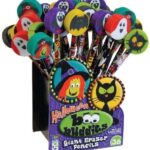

We've all been there. Our family members are disagreeing about something, and they come to us -- a neutral party -- wanting us to take sides.
At best, it's awkward. At worst, someone ends up feeling crummy and isolated.
Sometimes two children want us to take sides and resolve problems for them. Other times, the other "side" is an adult -- our co-parent. That certainly never feels good.
First, know this is a very common source of parenting conflict. It's nearly inevitable; adults approach parenting situations from different perspectives and backgrounds.
In family conflict, it may feel like a child is trying to pit one parent against the other. However, reality is that by asking us to take sides, they're trying to understand where the boundaries really are. This is healthy and normal behavior for a child.
In our case, both my husband and I are committed to positive parenting. However, the details of how we handle situations sometimes differs in practice.
My husband is usually a gentle parent; to his credit, he's worked hard to embrace this way of living. He also happens to be human, so there's that.
Of course, I'm imperfect, too. I've made mistakes with my child and he's been witness to them. Plenty of them.
Sometimes, disagreements about parenting "in the moment" can be confusing for a child. Like many couples, we often agree conceptually about discipline and child rearing, but our implementation doesn't always match.
Still, we know it's important for our child's wellbeing that we resolve our parenting conflicts in healthy ways (source).
We work to avoid having to take sides. At the same time, we ALL sometimes need a helping hand to move past situations where we're feeling stuck.
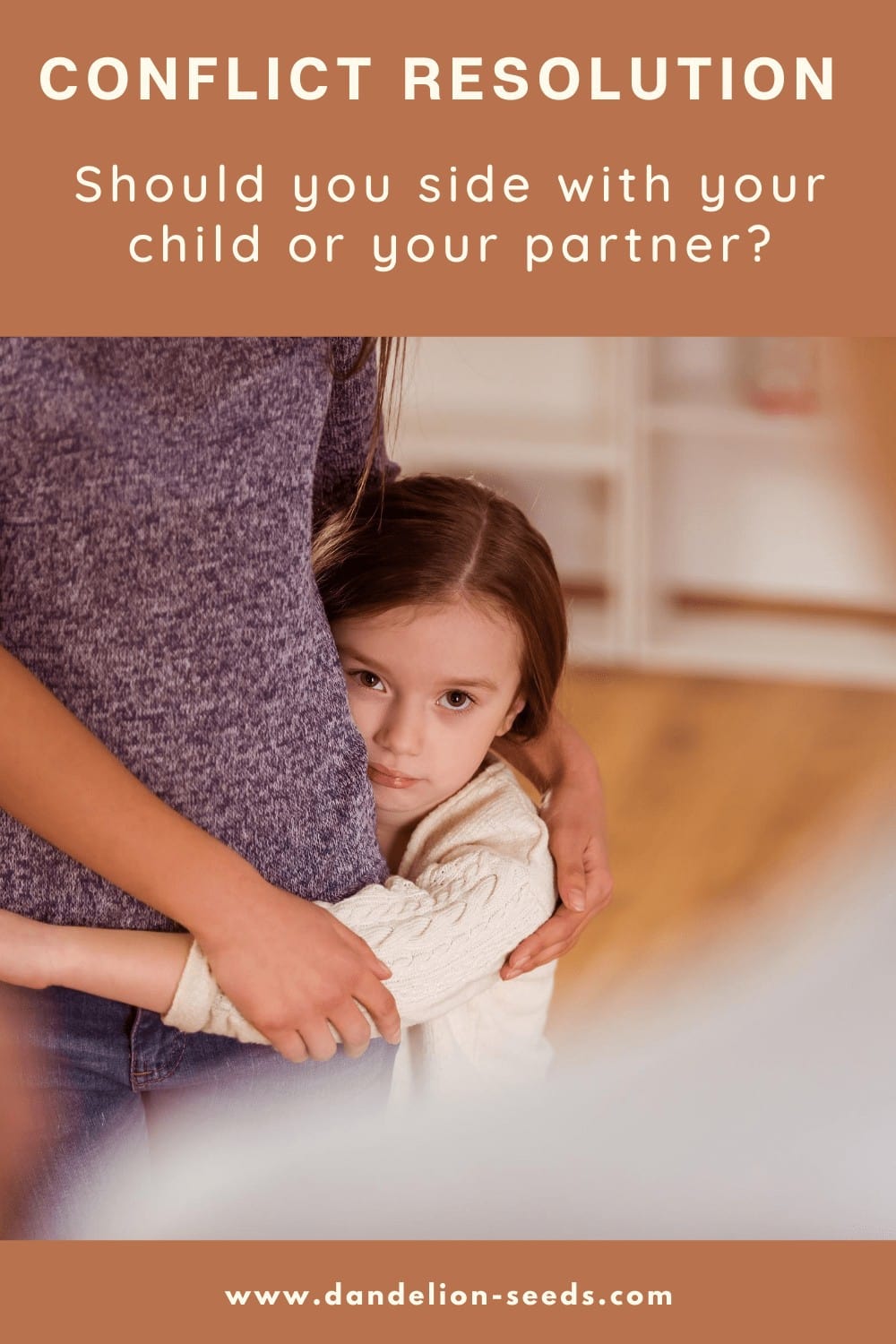
It's particularly tricky, of course, when one of us hasn't been privy to a dispute, and now that person is put in the middle to take sides.
Recently, all three of us were in our backyard. I was mowing the lawn, my husband was hanging a sun shade over our patio, and our child was playing.
When I was done mowing, I went inside and left the two of them outdoors. When they came in, there was clearly some discord between them.
As it turns out, our child had removed her shoes in the grass and wanted my husband to bring them inside for her.
His standpoint was, "Her shoes, her responsibility."
She decided she'd be happy to leave them in the grass and come in without them.
My child asked, "Mommy, you'd have gotten my shoes for me, right?" She's 7. This is a normal line of questioning for someone her age; she wasn't meaning to throw her Daddy under the proverbial bus.
My husband interjected, "They're her shoes so she needs to bring them in. We're not going to get them for her." He gave me a look that implied he didn't want me to "cave" and retrieve them.
I didn't sign up to be put into the middle of conflict resolution. All I did was mow the lawn. I didn't want to take sides here.
As I saw it in that moment, I had several options. I could've said:
Who said I had to take one of THESE options, anyway? Just because my husband and daughter presented me with a couple of alternatives, didn't mean they were the only ways to handle this. I did not have to take sides.
Here's what I did, instead, to mitigate conflict over the issue, and also to model problem-solving.
Knowing that no one can easily make a good decision when they're angry (source), I told them we'd pause the conversation.
"What?!" they both inquired. They wanted resolution NOW.
But emotional regulation needed to happen first, for both of them. I calmly explained, "I'm not comfortable being put in the middle of this disagreement. I need to make a boundary and remove myself from the discussion for awhile. I've heard both your perspectives and I'm going to think about how to handle this."
They didn't love my boundary, but they both agreed we could pause the discussion.
So, we had lunch. They calmed down.
I said, "I still don't want to take sides about who should get the shoes. [Daughter], you're right. I probably would've gotten your shoes today. In our family, we help each other. So, I think it's appropriate to ask one another to get our stuff sometimes." My daughter breathed a sigh of relief. She felt validated.
Helping each other is classic role modeling. If adults say, "Your stuff isn't my responsibility," what happens when we ask our child to help us with something? It would be hypocritical for us to expect that they would. This isn't a one-way street.
Modeling helpfulness and responsibility happens in big and little ways, every single day. And modeling behavior is the surest predictor of what kind of person our child will become.
Some would argue that this approach fosters entitlement in children. I disagree. If we model helpfulness, we should watch for the ways they begin contributing to the family naturally. One of my upcoming courses will go into this in more depth.
I quickly added, "At the same time, we also need to take good care of our belongings and we want to make sure everyone does their share. So, I can see the importance of bringing in our own shoes sometimes." My husband exhaled. He felt validated.
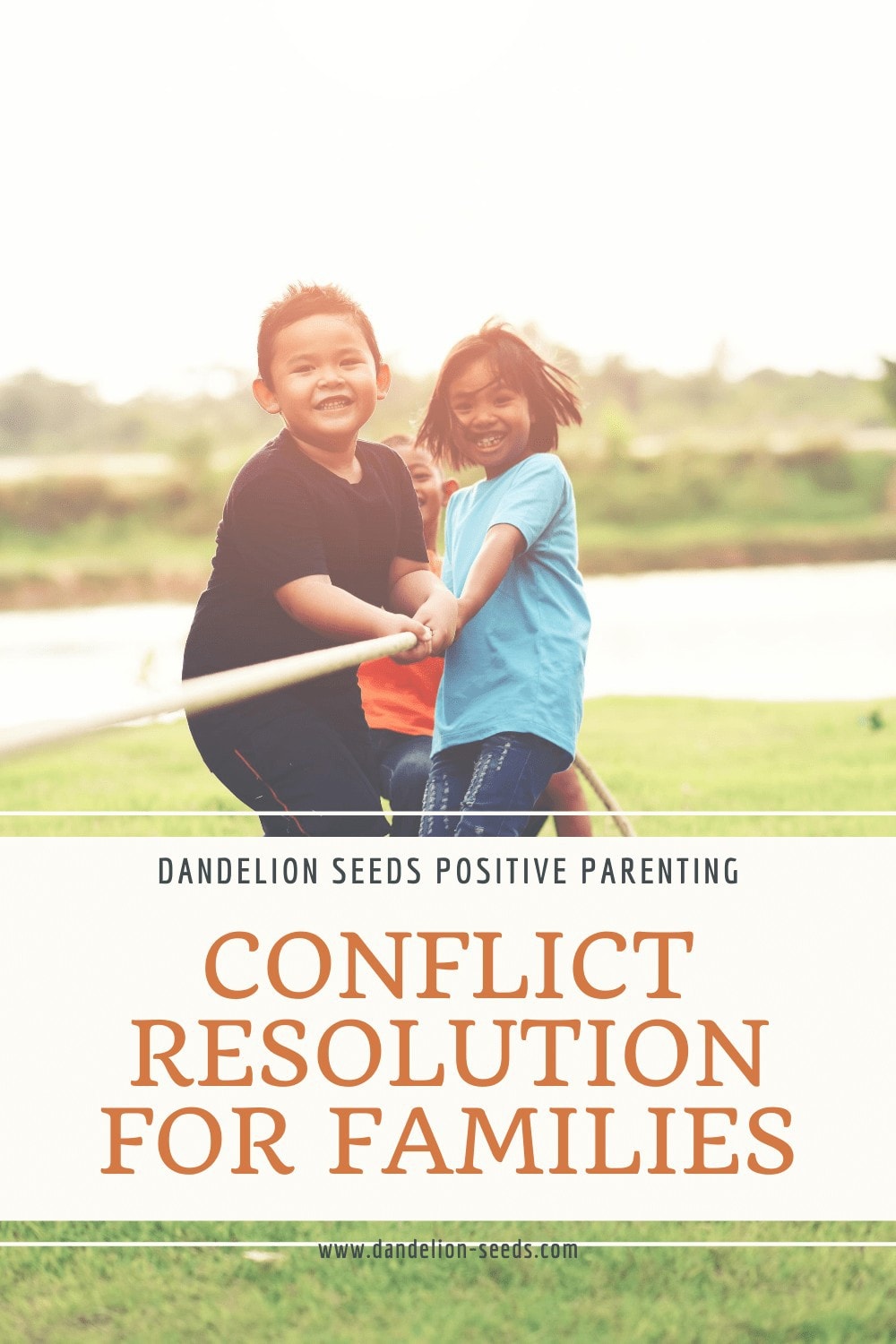
Playful parenting was the next most logical step, and it didn't require that I take sides.
I first asked if they'd be willing to make a game of problem solving. They both agreed. (Consensus is important.)
In my most official-sounding voice, I announced, "IT IS NOW TIME FOR THE GREAT SHOE HUNT! EVERYONE PLEASE GO OUTSIDE AND STAND ON THE PORCH. I'LL SHARE THE RULES MOMENTARILY!"
Once they were both outside, I said they'd have exactly 60 seconds to find a missing pair of shoes. However, they both had to do it with only ONE eye open -- and they must hop on one foot to get there.
I counted to three and off they went.
Of course they both knew where the shoes were. They were right where they'd left them.
Of course we knew my child would be the one to "win" -- that was the point. And naturally, she was perfectly cognizant of the fact that she was retrieving her own shoes after all. She didn't miss the lesson here.
In the context of play, and being emotionally regulated, she was happy to do the work of retrieving her shoes.
The difference was that we spoke her language; the language of play.
I didn't have to take sides. What I had to do instead was to approach the problem from a different perspective.
Nope. It doesn't always work. There's no magical bandage that solves all problems.
You'll be surprised how many it does solve, however. All the better if we can use it proactively, before the need to take sides ever arises.
It's the perfect starting point to avoid unnecessary conflict.
And to be clear, was my way the "best" way? I don't know. I do see my husband's perspective about learning responsibility. I'm trusting that she IS learning, and my way isn't the only way she'll do that.
It felt good to me to not have to take sides. I, too, felt validated in my boundary and am glad I didn't have to mediate a win/lose situation, when a win/win was possible.
The positive approach is always worth a try -- and you might just avoid having to take sides altogether. Some problems just work themselves out when we allow for creative solutions.
This is all part of parenting, one missing shoe at a time.
Afflinks. As an Amazon associate, we earn from qualifying purchases.




We've all been there. We're sitting nose-to-nose with a human much smaller than we are, and we're simply not connecting. We want x. They want y. And neither of us is budging. We want to be peaceful parents, but it doesn't always come easily. In moments like these, might playful parenting be the key?
If "play is the work of childhood" (a quote by child psychologist Jean Piaget), then playful parenting is the best way we can work with our children. It's the absolute key to cooperation. It's speaking in their own true language; the language of their hearts and minds.
Children play "rain or shine"---it helps them decrease stress, learn new things, and figure out the world (source). The time we invest in playful parenting helps us connect with our kids, while also helping them feel emotionally safe and understood. That, in turn, makes our job as parents easier.
We want to enjoy our interactions with our children. If we focus on "getting" them to do things, the relationship becomes about power. Instead, I'd encourage parents to work alongside their children as partners against whatever problems they're trying to solve.
Playful parenting embodies what positive parenting is all about; working with kids rather than against them. Being a playful parent signals to a child that we're on their side—we're in this life together.
We can connect and be close without power struggles.

These playful parenting tips below work especially well for ages of 2 - 8, but versions of them can continue well beyond these years.
An important note to remember is that playful parenting works best before emotions have escalated. If the initial engagement with your child is positive, it's the surest way to maintain a sense of peace in your home. As they say, "An ounce of prevention is worth a pound of cure."
Playful parenting certainly can work retroactively, however. Perhaps our first attempt at talking with our child didn't go over so well. Make space for the child to become emotionally regulated again, then try a fresh start.
One fun way to accomplish this is to feign total incompetence. As you approach your child with her hairbrush, say, "Open wide! Time to brush your teeth!" Similarly, holding the toothbrush, say, "Oh, this will make your hair so fancy!"
Your child will love the feeling of power and total competence as they point out the error of your ways. You, of course, will be shocked to learn your mistake. With exaggerated hesitation, you will agree to try it their way for a moment.
After a minute (especially if they start to protest), add, "That's right! I use this on your ARM! Arm, be still." Use it near your own arm if need be. It's okay to go back and forth a time or three to get it done.
Try to trust your child's body and timing here. If they need help remembering to check, however, make it fun. Maybe they're climbing onto a choo choo train. Perhaps it's a rocket that's about to blast off to a new solar system.
Do YOU, parent, fit into that 3T sweater? Please try. If your child isn't keen to get dressed, a bit of laughter clears the air and helps you connect. It's worth the time to slow down and be silly if it cancels the 45-minute tantrum that might otherwise ensue.
Another great way to accomplish getting your child ready for the day is to involve the stuffed animals. They're your allies. Can your child dress a doll while you're putting on his socks? Can your kiddo tell you what his animal friend needs to wear for his rainy day, and what he might need to do to match him? Get your kids outside their heads here. Involve them in care taking.
It's important to remember that once you have children, it's normal for your home not to look, well, like it used to. That's okay.
You might walk into a room and see a mess, but your child sees a world of possibilities. Allowing for some "mess" might be one of the best gifts you can give yourself stress-wise.
When it does start to feel overwhelming, however, cease talking about cleaning and all that "responsibility" rubbish (child view). Your child will inevitably pick up on any anxiety you convey around cleaning. For everyone's sake, work to make it a peaceful and lighthearted process.
Since this is a common trouble spot, I'll share several ideas of how you can incorporate playful parenting into this sometimes tricky topic.
The key idea is this: Changing your nomenclature helps tremendously. Use kid terms. Not only enter, but lead, the world of make-believe.
When you see a bunch of toy cars all over the floor, notice the incredible traffic jam. The drivers need help getting back to their proper parking garage (the toy box)! "Drive" them back together. Sound effects help.
Building blocks have somehow scattered across the floor and need to make it back into the bag? No problem! You're not holding a bag; you're holding the HUNGRY MONSTER. "Feed me!" it bellows playfully. "Hungry! Must eat blocks! More! More!" On it goes until the mess is gone.
Get creative. If something doesn't have a logical "home" (like cars in a box you call a parking garage), make it silly. "Let's put all the dolls in the tree house [on the shelf] for the night!" Even a paper bag can be a "tent" for something. Bring toys and their storage spaces to life.
Lastly, remember how incompetent you were at brushing teeth and hair? You're even worse when it comes to picking up the toys! A ball? It weighs as much as a semi truck! How in the world can you lift it? Can someone save the day? (Many children love to rescue adults.) That giant toy elephant, however, is a breeze for you---it's light as a feather.
Your superpowers are very confusing---and hilarious.
Although I often shy away from competition, this is the one time I'll offer a race. Who can put on shoes the fastest and touch the doorknob? For some kids (particularly highly sensitive children), however, competition can cause anxiety, so use it with caution.
Would anyone like to hop to the door like a bunny? Roll across the rug to get there? Be carried and spun in circles? Sometimes a different mode of transportation is all they need.
If your child can help put away non-breakable items from the dishwasher, for example, let them try. A great question to ask (even if they've done it before) is "Do you think you're strong enough to move these cups from the dishwasher to the counter?"
Children love feeling competent. So much of their existence includes not knowing what to do, so when they feel capable, it's incredibly empowering for them.

If your child is struggling with a particular task that involves his or her body, for example, talk to the body part directly through playful parenting. Let's say a child is handling the family dog too roughly. One option is to remind the child what to do in simple terms: "Gentle hands, please." This lighthearted and clear approach often works well.
A playful parenting modification would be, "Excuse me, hands? Yes, all 10 fingers -- wiggle your way over here, please." Rather than looking your child in the eye, look at, speak to, and gently touch your child's hands as if they, alone, are the offending party.
This works particularly well for sensitive children who might feel embarrassed about what's transpired, or who have a tough time with correction.
You continue, "Dear hands, I could really use your help here. Our dog needs gentle hands only. Here are some things you CAN do. Would you rather play a game, do some clapping, or wave yourselves up in the air?"
Playful parenting gets the "correction" done in a lighthearted yet still entirely effective way.
How does it work, though, for adults who aren't as naturally playful as kids are? Our brains are wired quite differently from theirs! As we know, kids can have fun playing with parents, friends, and even cardboard boxes. Not all of us have been to comedy school -- do we have to be naturally funny?
Not at all. In short, we can meet our kids where they are in their play. Join in and see what they're doing. Opportunities for playful parenting often present themselves naturally if we enter our children's world of imagination.
Example: Let's say your child is busy playing castles and dragons / dress-up. However, it's time for dinner. Rather than making them disengage from their play, roll out an imaginary red carpet and march to the table together. Or, climb into their invisible chariot that takes them to the banquet hall for the royal feast.
We don't need to manufacture something new and creative to make playful parenting "work" for our kids. We just need to let our guard down a bit and, to the extent that we can, see life through their lens for a little while.
I'll speak more about this in an upcoming course (details forthcoming).
This is parenting for connection; parenting for the relationship not just for today, but also for the long run. Sure, if you're new to playful parenting, it might seem to take more time "in the moment." Ultimately, however, it can spare your family buckets full of tears and be entirely worth the effort.
Oftentimes, after some practice, cooperation happens so easily through play that it's faster than any other alternative.
As a side bonus, you might be surprised how self-sufficient children can become after they've learned how to do all these things in an emotionally safe place with you---and they feel connected. Studies show that secure and healthy attachment actually foster greater independence in the long run (source).
Playful parenting is a wonderful return on your investment. Long-term connection starts when kids are little. It has a compounding effect--it grows over time, decreases conflict, and increases trust.
Being a playful parent is a part of the equation that fosters connection for many years to come. It's all about relationship.
This post contains affiliate links. As Amazon Associates, we earn from qualifying purchases. Your purchases help us support important charities.